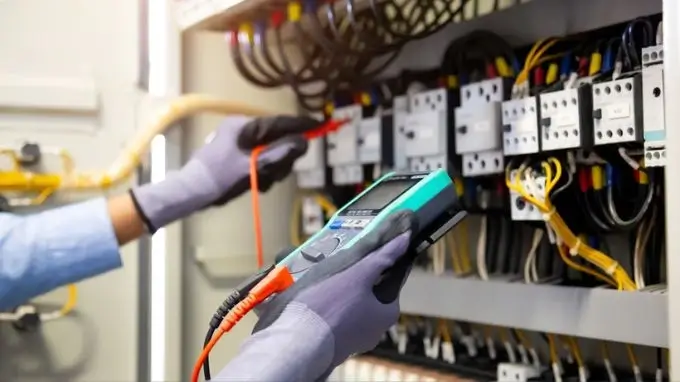Maintain compliance with dependable regulatory compliance assistance for your projects.
Wiki Article
Leading Tips for Effective Electrical System Troubleshooting
Repairing electrical systems requires a systematic method, based in an extensive understanding of electric principles and safety and security procedures. By familiarizing oneself with circuit parts, using crucial devices, and sticking to a structured analysis approach, specialists can effectively identify and deal with problems. Nonetheless, the nuances of efficient troubleshooting prolong past simple technological expertise; recognizing exactly how to document findings and prioritize safety and security can considerably influence outcomes. As we check out these important elements further, it comes to be clear that mastering this procedure is not just beneficial however essential for success in the area.Understand the Fundamentals
Recognizing the basics of electric systems is necessary for efficient troubleshooting, as a solid foundation permits service technicians to detect and solve problems extra effectively. A detailed grasp of electric concepts, such as voltage, current, resistance, and power, is essential in determining the source of issues. Voltage is the electric possible distinction that drives present with a circuit, while resistance opposes the circulation of present, influencing the overall capability of the system.Experience with circuit parts, including resistors, capacitors, diodes, and switches, is additionally vital. Each component plays a distinct role in circuit behavior and can influence efficiency when malfunctioning. In addition, understanding collection and parallel circuit configurations is important, as these plans affect the distribution of voltage and existing within the system.
Specialists should be conscious of potential threats, such as shock and short circuits, to apply risk-free troubleshooting methods. By understanding these fundamental concepts, service technicians boost their ability to conduct reliable diagnostics and repair services, eventually leading to improved efficiency and reliability of electrical systems (electrical system troubleshooting).
Gather Necessary Tools
Effective troubleshooting of electric systems calls for the best set of tools to identify and deal with concerns properly. A well-appointed technician can considerably boost efficiency and effectiveness in recognizing problems. Necessary devices consist of a multimeter, which gauges voltage, existing, and resistance, enabling specific evaluations of electrical parts. Clamp meters are also beneficial for determining existing without detaching the circuit, making sure safety and ease.Furthermore, protected hand tools such as screwdrivers, pliers, and wire strippers are essential for safely controling electric links. It is additionally suggested to have a circuit tester on hand to verify the visibility of voltage in electrical outlets and wires. For even more complicated systems, a thermal imaging camera can help detect overheating components, indicating potential failings.

Adhere To an Organized Approach
Having actually collected the appropriate tools, the mechanical system optimisation support next step in troubleshooting electric systems is to adhere to an organized technique. A systematic strategy makes sure that service technicians can recognize mistakes successfully and properly, reducing downtime and stopping unnecessary fixings.Begin by assessing the system's schematic representations and specs. This entails monitoring each part methodically, starting from the power source and working in the direction of the tons.
Utilize testing tools, such as multimeters and oscilloscopes, to collect unbiased data about voltage, current, and resistance at different points within the system. This empirical evidence will certainly lead your troubleshooting efforts and help to validate or remove potential causes of failure.
Additionally, think about ecological variables that may affect the system's performance, such as temperature fluctuations or wetness access. An extensive evaluation of electrical wiring, connections, and elements will make certain that all possibilities are represented.
Record Your Searchings For
Thorough paperwork is important in the troubleshooting procedure of electric systems. This technique not just help in comprehending the origin cause of the problem however additionally offers as a referral for future fixing efforts.
In addition, preserving a log of parts replaced or repair services done is very useful. This details sustains stock management and can assist analyze the durability and dependability of particular parts.
Ultimately, the documentation process need to be comprehensive yet succinct, enabling simple access and evaluation - electrical system troubleshooting. By focusing on detailed documentation, service technicians can create a useful data base that not only aids in current troubleshooting but also empowers future maintenance initiatives, therefore boosting general system dependability

Prioritize Precaution
Identifying the intrinsic risks related to electrical systems is important for making certain safety during troubleshooting. Electric shock, burns, and devices damage are simply a few of the potential dangers that specialists face. Focusing on precaution is not just a lawful commitment however likewise an ethical imperative that safeguards both the professional and the surrounding atmosphere.Before commencing any troubleshooting task, service technicians need to wear suitable personal safety equipment (PPE), including shielded gloves, safety and security glasses, and flame-resistant apparel. Making certain that the workplace is dry and without clutter can significantly minimize the threat of mishaps. Moreover, it is necessary to de-energize circuits prior to starting any job, validating that they are not endure making use of a multimeter or voltage tester.
Establishing clear interaction methods with team participants is additionally essential; this guarantees that every person knows prospective threats and the condition of the electrical system being dealt with. Having an emergency response strategy in location can confirm very useful in the event of an event. By focusing on safety procedures, technicians can properly alleviate risks and promote a much safer office.
Conclusion
Effective electrical system repairing counts on an extensive understanding of essential concepts and a methodical approach. Focusing on safety steps makes sure the well-being of people entailed and the honesty of the electrical system.Report this wiki page